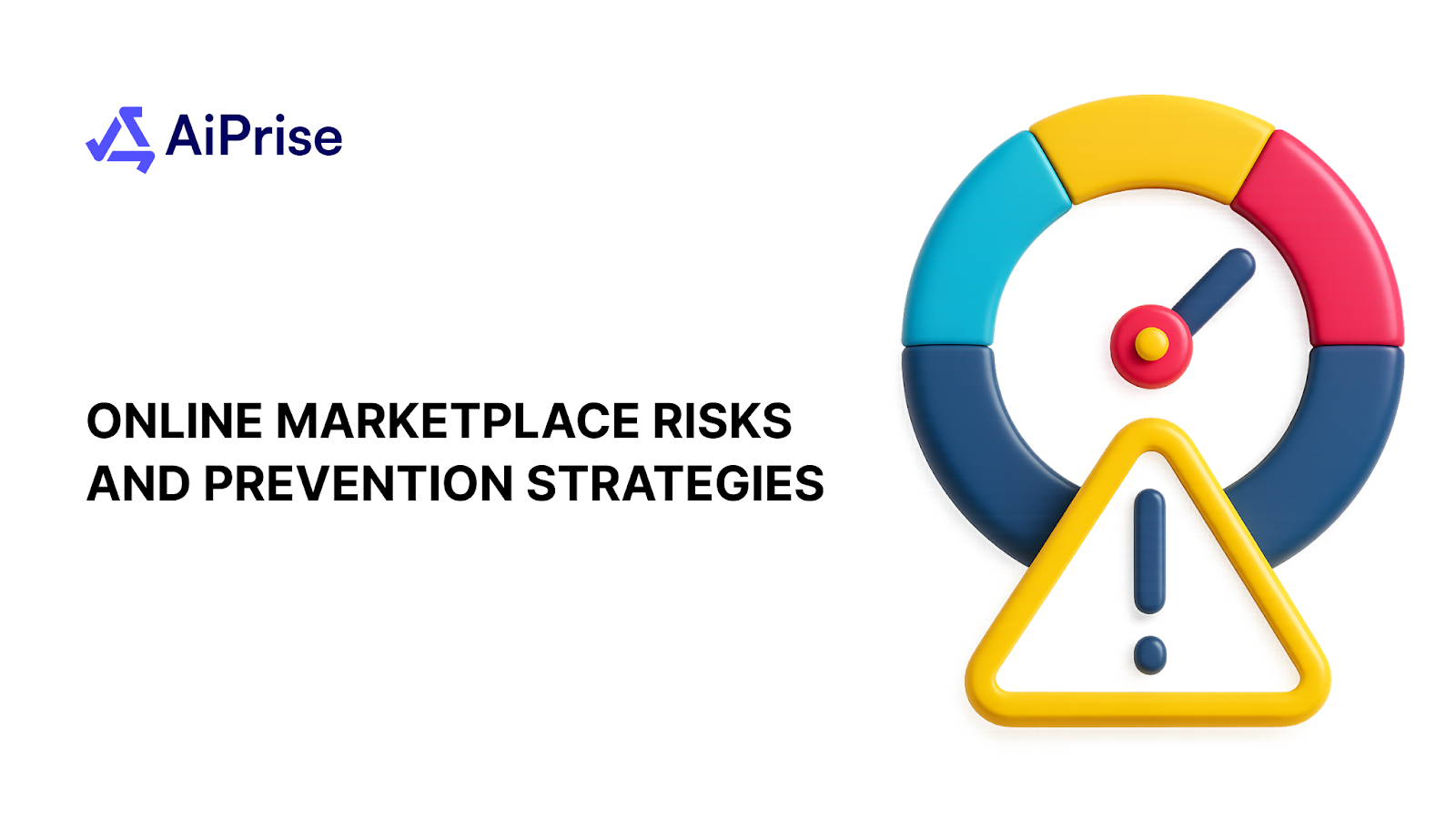AiPrise
10 min read
October 9, 2025
Understanding Risk Based Lending and Pricing

Key Takeaways










In the financial market, approximately 80 percent of consumers have credit scores at or above 750, while 20 percent fall below this threshold, highlighting the critical importance of sophisticated risk assessment methodologies. This disparity underscores why risk-based financing has become the cornerstone of modern lending practices, enabling financial institutions to make more informed decisions while expanding access to credit across diverse borrower segments.
Risk-based financing represents a fundamental shift from traditional one-size-fits-all lending approaches to personalized pricing models that reflect individual borrower characteristics and market conditions. Understanding this concept is essential for both financial institutions seeking to optimize their lending portfolios and borrowers looking to manage the modern credit segment effectively.
In a Nutshell
- Risk-based financing tailors loan terms to individual borrower risk profiles instead of applying uniform pricing.
- It uses a mix of traditional credit data and alternative data sources like income patterns and behavioral analytics.
- Borrowers with lower risk typically receive better interest rates, while higher-risk individuals may face stricter terms or higher costs.
- The model allows lenders to expand credit access without compromising portfolio health or compliance.
- Market competition and data quality can impact the accuracy and fairness of risk-based pricing.
What is Risk-Based Lending and Pricing?
Risk-based pricing is when a lender offers you less favorable loan terms, such as a higher interest rate, based on the perceived risk of the borrower defaulting on the loan. More comprehensively, risk-based financing is a methodology where financial institutions tailor loan terms, interest rates, and credit conditions based on a comprehensive assessment of borrower risk profiles.
Risk-based pricing is a method in which lenders use factors such as your credit score and income to estimate how likely you are to make on-time payments. Then, they base your loan or credit card rates and terms on your degree of risk as a borrower. This approach allows lenders to:
- Price loans more accurately according to actual risk levels.
- Expand credit access to previously underserved populations.
- Maintain competitive pricing for low-risk borrowers.
- Optimize portfolio performance through better risk distribution.
The fundamental principle behind risk-based financing lies in the statistical relationship between borrower characteristics and default probability. By analyzing historical data and current market conditions, lenders can create sophisticated models that predict the likelihood of repayment and price loans accordingly.
To truly understand where risk-based financing is headed, it is helpful to know its origins.
Historical Context: Evolution of Risk-Based Lending
Risk-based financing evolved from decades of refinement in credit assessment. Prior to the 1980s, lending decisions were largely manual and subjective, relying on personal relationships and local reputation.
The introduction of FICO scores in 1989 marked a turning point, offering lenders a standardized way to assess risk. By the early 2000s, lenders began supplementing credit scores with data-driven algorithms, giving rise to the modern risk-based pricing models seen today.
In recent years, the inclusion of alternative data and AI-powered analytics has further transformed the space. This evolution continues to unlock credit access for underbanked populations globally, driving financial inclusion while managing portfolio risk.
With history as context, let’s shift to the core machinery. What actually powers these lending decisions? It’s time to break down the anatomy of modern risk models.
Suggested Read: Common Types of Business and Financial Fraud
Key Components of Risk-Based Financing Models
Modern risk-based financing systems are built on sophisticated frameworks that evaluate borrower creditworthiness through multiple interconnected components. These systems have evolved far beyond simple credit score evaluations to incorporate comprehensive data analysis, behavioral patterns, and market dynamics.
Understanding these key components is essential for financial institutions looking to implement effective risk-based pricing strategies and for borrowers seeking to understand how their loan terms are determined.
Each component plays a critical role in creating accurate risk assessments that enable fair pricing while maintaining portfolio performance and regulatory compliance.
Credit Risk Assessment
The foundation of any risk-based financing system begins with comprehensive credit risk evaluation. Modern lenders utilize multiple data sources to build comprehensive borrower profiles:

Traditional Credit Factors:
- Credit scores and credit history length
- Payment history and delinquency patterns
- Debt-to-income ratios
- Employment stability and income verification
- Existing credit utilization rates
Alternative Data Sources:
- Bank account transaction patterns
- Utility and rent payment histories
- Educational background and professional qualifications
- Social media and digital footprint analysis
- Psychometric and behavioral assessments
Pricing Methodology
In risk-based financing, lenders adjust loan terms and interest rates based on a borrower’s risk profile. Typically, this involves a pricing increase of 0.5% to 2.5% depending on the perceived risk of default. However, the exact rate adjustment can vary significantly based on factors such as market conditions, credit product type, and regional competition.
Advanced models may even adjust based on portfolio-wide risk assessments, considering how the new loan interacts with an institution’s existing portfolio.
For example, in the U.S., lenders often employ a tiered pricing structure, which is influenced by credit score ranges and perceived default risk. Higher-risk borrowers, such as those with lower credit scores, typically face higher rates compared to those with excellent credit histories. These adjustments can range from small increases for those in the near-prime category to more significant increases for those in the subprime or deep subprime ranges.
It’s important to note that these rate adjustments can vary based on regional differences and local lending practices. For instance, lenders in some regions may have more flexibility in pricing based on local competition, economic conditions, and regulatory frameworks.
Market Competition Dynamics
Recent research reveals important insights about how competition affects risk-based financing. An increase in competition makes corporate lending rates less sensitive to banks' own assessment of borrower probability of default, and this is more pronounced in market segments with a higher degree of asymmetric information. This finding suggests that competitive pressures can sometimes compromise the effectiveness of risk-based pricing models.
Knowing the components is one thing; seeing them in action is another. Here's how risk-based financing plays out from the first credit check to the final loan term.
How Risk-Based Financing Works
Risk-based financing is centered around evaluating and pricing loans based on the risk posed by a borrower. Here's a breakdown of how it works:

Step 1: Risk Assessment and Credit Evaluation
At the core of risk-based financing is risk assessment. Lenders analyze a borrower’s financial history, credit score, and other key metrics to evaluate the level of risk. Common factors include:
- Credit Score: A borrower’s credit score is a key indicator of their ability to repay a loan. Higher credit scores generally signal lower risk, leading to more favorable loan terms.
- Debt-to-Income Ratio: This ratio compares a borrower’s monthly debt payments to their monthly income. A lower ratio indicates a better ability to repay the loan.
- Payment History: A borrower’s history of paying bills and repaying previous loans is another important factor. Late or missed payments can increase the perceived risk.
Based on these factors, lenders assign a risk profile to the borrower, which helps determine the loan’s terms, such as the interest rate and repayment schedule.
Step 2: Loan Pricing Based on Risk
Once the risk profile is established, lenders can price the loan accordingly. The basic premise is simple: the higher the risk, the higher the cost for the borrower. Here’s how it plays out:
- Low-Risk Borrowers: A borrower with a high credit score, stable income, and a history of on-time payments may be offered a loan with a low interest rate and favorable terms.
- High-Risk Borrowers: A borrower with a lower credit score, a higher debt-to-income ratio, or a history of missed payments may face higher interest rates to compensate for the increased risk of default.
In some cases, lenders may also require collateral for high-risk loans to mitigate potential losses if the borrower defaults.
Step 3: Loan Terms and Flexibility
Another key aspect of risk-based financing is the flexibility it offers in terms of loan terms. Lenders may adjust the following based on the borrower’s risk profile:
- Interest Rate: As mentioned, higher-risk borrowers typically face higher interest rates, which means they’ll pay more over the life of the loan.
- Repayment Period: Riskier loans may come with shorter repayment periods to reduce the lender’s exposure to long-term risk.
- Loan Amount: Lenders may limit the loan amount for higher-risk borrowers to prevent overexposure to potential default.
Step 4: Risk Monitoring and Adjustment
Risk-based financing isn’t a one-time assessment. Lenders continuously monitor the borrower’s financial situation and may adjust loan terms as needed. For instance, if a borrower’s credit score improves over time, they may be eligible for lower interest rates or better loan terms in the future.
Risk-based financing provides both flexibility and a more tailored approach to lending. It ensures that lenders can manage their risk more effectively while offering borrowers terms that align with their financial situation.
So, what's the payoff? Let's look at how this model creates value for both sides: lenders and borrowers, without tipping the scales unfairly.
Benefits of Risk-Based Financing
The adoption of risk-based financing creates a win-win scenario that fundamentally transforms the lending segment for both financial institutions and borrowers. Unlike traditional lending models that often apply uniform criteria and pricing, risk-based approaches enable more precise risk assessment and fairer pricing mechanisms that reflect actual borrower characteristics and market realities.
The benefits extend beyond individual transactions to strengthen the overall financial system by promoting better risk distribution, enhanced competition, and more informed lending decisions. Let's understand them through the table below:
These advantages aren't just theoretical; when implemented with precision, risk-based financing can reshape lending outcomes and unlock broader financial inclusion.
But even the smartest lending models have friction points. From data gaps to regulatory complexities, risk-based financing still comes with terrain lenders must handle carefully.
Challenges and Limitations of Risk-Based Financing
While risk-based financing offers clear advantages, it is not without challenges. Several limitations can impact both lenders and borrowers, particularly when data is incomplete or model assumptions fail.
Key challenges include:
- Data Gaps and Biases: Inaccurate or incomplete data can lead to flawed risk assessments. Traditional credit scores may exclude individuals with limited credit histories, potentially misclassifying them as high risk.
- Overreliance on Models: Statistical models can sometimes oversimplify human behavior. External factors like economic downturns or personal emergencies may affect repayment capacity in unpredictable ways.
- Compliance Risk: Using alternative data, such as social media activity or behavioral analytics, can raise privacy and ethical concerns. Financial institutions must ensure adherence to data protection laws and fair lending regulations.
- Credit Access Inequality: Although risk-based pricing expands credit access, higher rates for certain groups may reinforce financial exclusion if not carefully implemented with transparency and regulatory oversight.
Meeting these challenges requires the right tools and infrastructure. This is where purpose-built solutions like AiPrise make all the difference.
Also read: Principles, Assessment, And Strategies In Fraud Risk Management.
How AiPrise Supports Risk-Based Financing
AiPrise empowers financial institutions to implement effective and scalable risk-based financing strategies by providing access to real-time identity, behavioral, and financial data across more than 100 global sources.
With support for 5 billion users and 500 million businesses, AiPrise’s platform allows lenders to:
- Build richer borrower profiles through both traditional and alternative data.
- Validate identities across 200+ countries, ensuring regulatory compliance.
- Detect risk patterns using AI-powered fraud and KYC/KYB tools.
- Stay current with evolving global standards using real-time compliance updates.
By enabling holistic risk assessment, AiPrise helps lenders make informed decisions, optimize pricing strategies, and expand credit access; all without compromising on accuracy or compliance.
Final Thoughts
Risk-based financing represents a crucial evolution in lending, allowing institutions to balance risk and reward more effectively while offering borrowers personalized credit opportunities. This model supports fairer pricing, greater inclusion, and improved portfolio management.
However, its success hinges on the quality of data, the transparency of pricing practices, and the ethical use of predictive tools. When implemented responsibly, risk-based lending not only benefits financial institutions but also fosters a more inclusive and efficient credit system.
Ready to implement smarter risk-based lending strategies?
Book a Demo with AiPrise today to see how unified data, global compliance, and intelligent risk tools can transform your lending operations.
Frequently Asked Questions (FAQs)
1. What factors influence risk-based loan pricing the most?
Credit score, payment history, income stability, and debt-to-income ratio are the most influential factors.
2. Is risk-based financing legal?
Yes, but it must comply with fair lending laws and data privacy regulations in each country.
3. What are the three types of risk in lending?
The three types of risk in lending are credit risk (the risk of borrower default), interest rate risk (the risk of fluctuating rates affecting loan profitability), and liquidity risk (the risk that a lender may not have enough cash to meet its obligations).
4. Can borrowers negotiate better terms under risk-based pricing?
Improving your credit profile can lead to better offers, but loan terms are usually based on fixed risk models.
5. Do all lenders use risk-based pricing?
Most modern financial institutions use some form of risk-based pricing, especially for unsecured lending products.
You might want to read these...

Aiprise has helped streamline our KYB (Know Your Business) flow in 100+ countries. No other tool comes close.





Speed Up Your Compliance by 10x
Automate your compliance processes with AiPrise and focus on growing your business.










